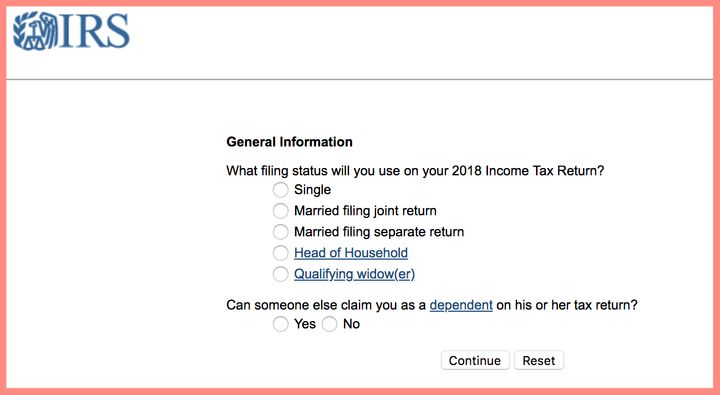Don’t give away free money.
The IRS rolled out the latest version of its tax calculator on Wednesday after updating it to reflect the new withholding tables. The free tool is designed to help taxpayers be sure they don’t have too much money taken out of their paychecks for taxes.
That’s because getting a big, fat refund is actually a bad thing.
While some people look forward to getting refunds for taxes they overpaid ― and some even consider it a way to save money ― overpaying your taxes is essentially giving the federal government an interest-free loan. The government gets to use your money for the better part of a year, then return it to you without a nickel of interest. So just to be clear: Getting a lump-sum check back from the IRS is actually bad, because you could have had that money in your savings account, where it would have earned interest, or used it to pay off debt ― or used it to not incur debt in the first place, because you had cash on hand.
With the IRS’ free tool, you can ensure you don’t have too much money held out of each paycheck.

What You’ll Need
To use the calculator, you’ll need your most recent pay stubs and most recent income tax return. Your completed 2017 tax return will help you estimate your 2018 income to expedite the calculation. If you’re self-employed or likely to have income swings later in the year, you’ll probably want to revisit the calculator again later in 2018.
The goal, though, is to set up your deductions so you don’t overpay taxes or get a refund next year ― something that roughly 75 percent of Americans currently receive.
The IRS is not terribly interested in getting more people to break even on withholding if they like getting a big check every spring, said Mark Mazur, director of the independent Tax Policy Center and a former tax official with the U.S. Treasury Department.
“People seem to like to get about the same refund year after year,” Mazur said. “They seem somewhat surprised when things are different.”
And ultimately, the burden of estimating how much a taxpayer will owe in taxes falls to the taxpayer. All salaried workers must submit a W-4 form to their employer that authorizes the amount of money (in the form of allowances) that they want taken out of their paychecks to cover their tax obligation. The flip side of overestimating what you will owe is underestimating it, which could result in getting slammed with a hefty tax bill when you file your return.
Why The Calculation Matters
The fear of owing taxes is one reason many taxpayers overpay during the year, according to Motley Fool. After all, the logic goes, it’s a far more pleasant experience to get a refund than suddenly have to cough up cash to pay the IRS.
The problem, though, is that people are far better off owing money than getting refunds, and here’s why: The bulk of Americans are extremely financially insecure. An estimated 57 percent of U.S. adults have less than $1,000 in the bank, while 39 percent have no savings at all. By limiting the amount of money we bring home each pay period, we’re putting ourselves at greater risk to incur more debt ― and with more debt comes interest charges.
Although many filers do use their refunds responsibly, a good chunk don’t. They see the money as “free cash” and an opportunity to splurge. In reality, a tax refund is just your money that you failed to collect up front, and you’re just getting it back from the government with no interest accumulated.
Check out the withholding calculator, then follow its recommendations for allowances when filling out or filing a new W-4.